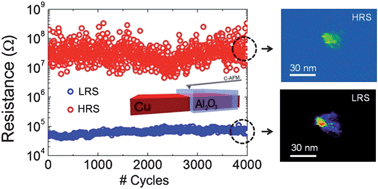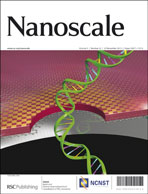Switching mechanism and reverse engineering of low-power Cu-based resistive switching devices
Abstract
In the recent past, filamentary-based resistive switching devices have emerged as predominant candidates for future non-volatile memory storage. Most of the striking characteristics of these devices are still limited by the high power consumption and poor understanding of the intimate resistive switching mechanism. In this study, we present an atomic scale study of the filament formation in CuTe–Al2O3 by using a conductive scanning probe tip to analyse the shape and dimensions of the filament. Filaments studied were either created within a normal device or locally formed while using the tip as the top electrode. We demonstrate that it is possible to create with C-AFM a filament with a signature identical to a device (i.e. two orders of magnitude resistance window, 104 s retention operating at 5 μA). This is obtained by a dedicated material and resistance selection for the conductive tip. The filamentary mechanism of fully processed devices is demonstrated and observed by C-AFM. Filaments created with C-AFM can be repeatedly cycled and the ON state presents a 20 nm highly conductive spot which can be repeatedly turned into a poorly conductive path in the OFF state.


 Please wait while we load your content...
Please wait while we load your content...